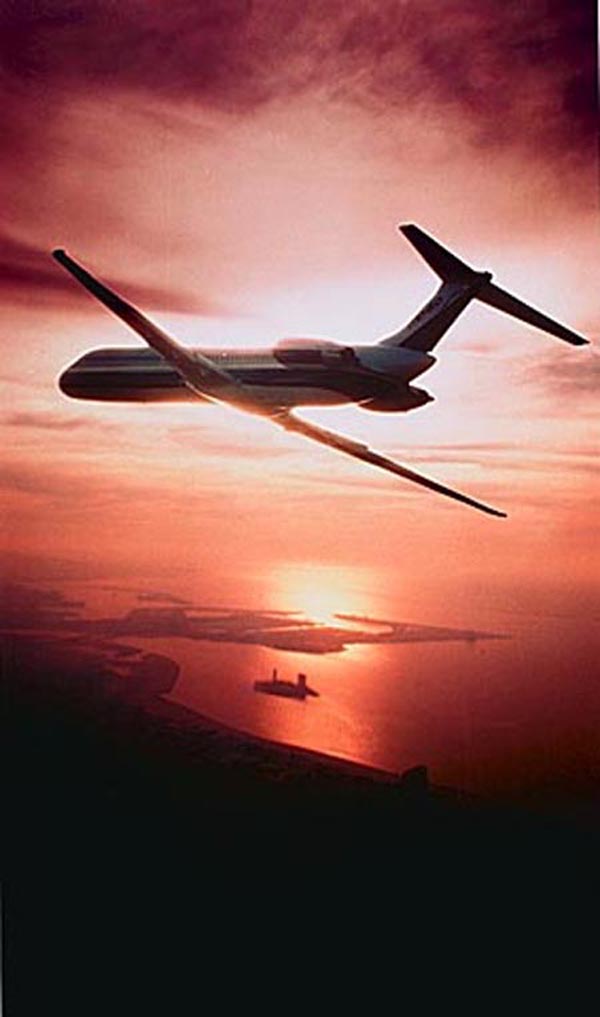

|
January 31, 2000, The National Transportation Safety Board tonight launched a Go Team to Oxnard, California, to begin its investigation of the crash of Alaska Airlines flight 261. The McDonnell Douglas MD-80 (N963AS) crashed off the coast of California this evening while en route from Puerto Vallarta, Mexico, to San Francisco. It is reported that the aircraft carried 83 passengers and 5 crew members. Preliminary information from air traffic control communications indicates that the aircraft’s crew reported no problems when they checked in with Los Angeles Air Traffic Control Center at about 4:00 p.m. Pacific Time. About 10 minutes later they reported that they were descending and experiencing control problems. They were cleared to proceed to Los Angeles International Airport. The last communication from the aircraft was received about 7 minutes after the first report of a problem. The first elements of the NTSB’s team will depart on a government aircraft from Reagan National Airport at about 2:00 a.m., Tuesday. Richard Rodriguez, who has almost 40 years of experience as an air safety investigator, will be the Board’s Investigator-in-Charge. NTSB Member John Hammerschmidt will accompany the team as the primary spokesman for the investigation. The MD 80 was manufactured in 1992. A company spokesman said the pilot radioed a problem with stabilizer trim and the plane was diverted to Los Angeles. The aircraft had no history of stabilizer trim problems. The aircraft is powered by two JT8D Pratt & Whitney engines. Recent maintenance on the aircraft included servicing on Jan. 30, 2000; an 'A' Check on Jan. 11, 2000; and a 'C' Check on Jan. 13, 1999. The aircraft had 26,584 hours of flight time and had completed 14,315 cycles. A cycle is defined as one takeoff and one landing. Alaska Airlines is a Seattle-based jet carrier that operates 89 aircraft, including 35 MD-80s. Alaska is the nation's 10th largest airline. John F. Kelly, Chairman and Chief Executive Officer of Alaska Airlines offers a message to the families involved. "All of us at Alaska Airlines have been shaken and deeply saddened by the accident involving Flight 261 on January 31, 2000. Our thoughts and our prayers at this moment are for our passengers and fellow employees and for their families, friends and loved ones. To all I extend my personal and profound sorrow for what has transpired". |
 |
Alaska Airlines has experienced two fatal accidents since 1970. Both involved Boeing 727 aircraft operated by Alaska Airlines: Sept. 4, 1971: A Boeing 727 operated by Alaska Airlines crashed into the slopes of a mountain near Juneau, Alaska, about 28 miles west of the airport. All seven crew members and 104 passengers were killed. April 5, 1976: A Boeing 727 operated by Alaska Airlines overran the runway after landing in Ketchikan, Alaska, killing one of the 50 passengers on board.
Other events: Two additional events, the first occurred during the fall of 1986, Alaska has experienced a "total hull loss" when a Boeing 727 being taxied empty by two mechanics was destroyed by fire after striking a jetway at the Anchorage International Airport. Neither mechanic was injured.
The second event occurred in the early 1990s, when an individual jumped the perimeter fence at Phoenix International Airport and ran in front of a Boeing 727 operated by Alaska Airlines during takeoff. It was later determined by authorities that the individual had planned to commit suicide.
| ŠAvStop Online Magazine Contact Us Return To News |